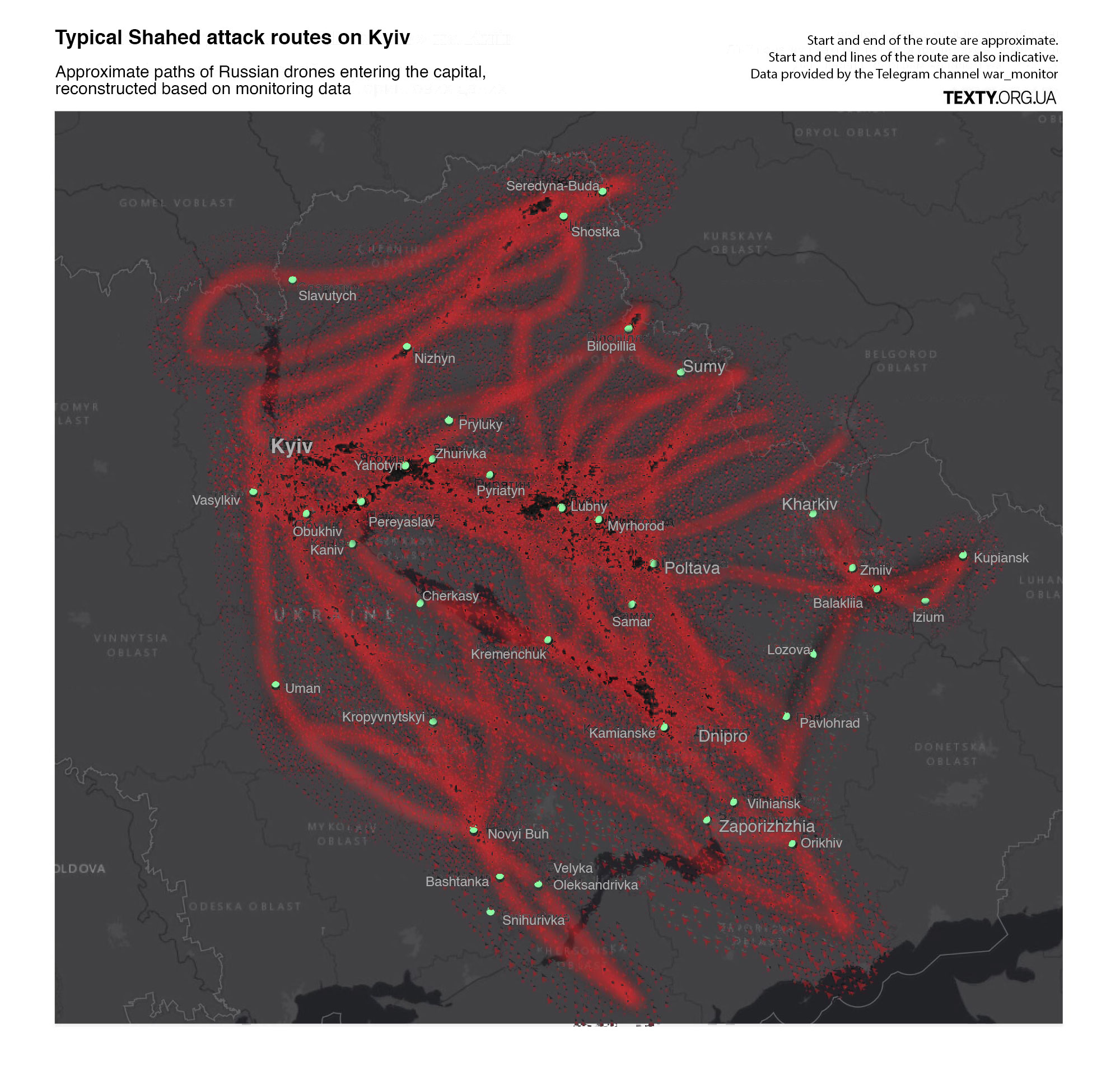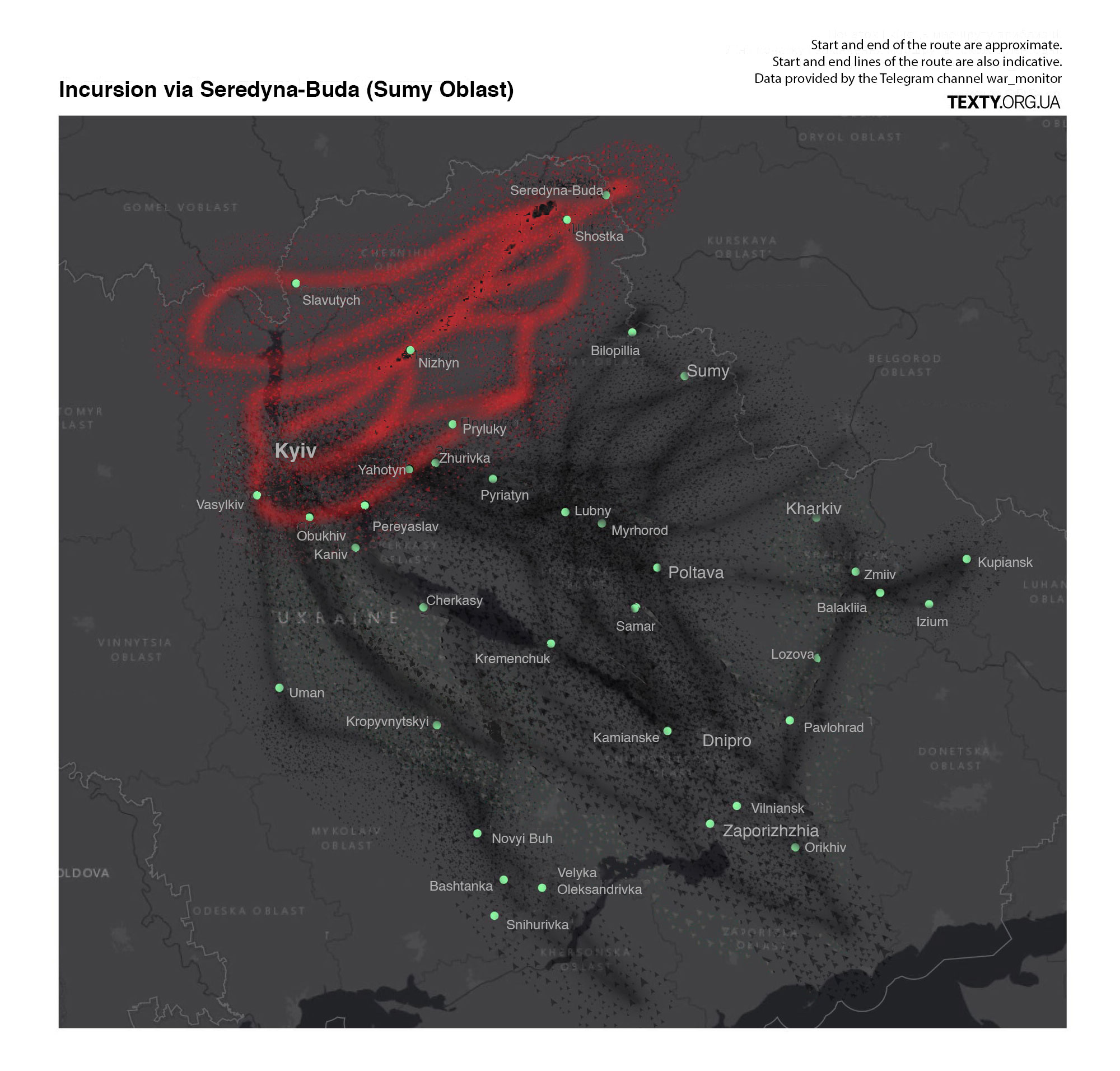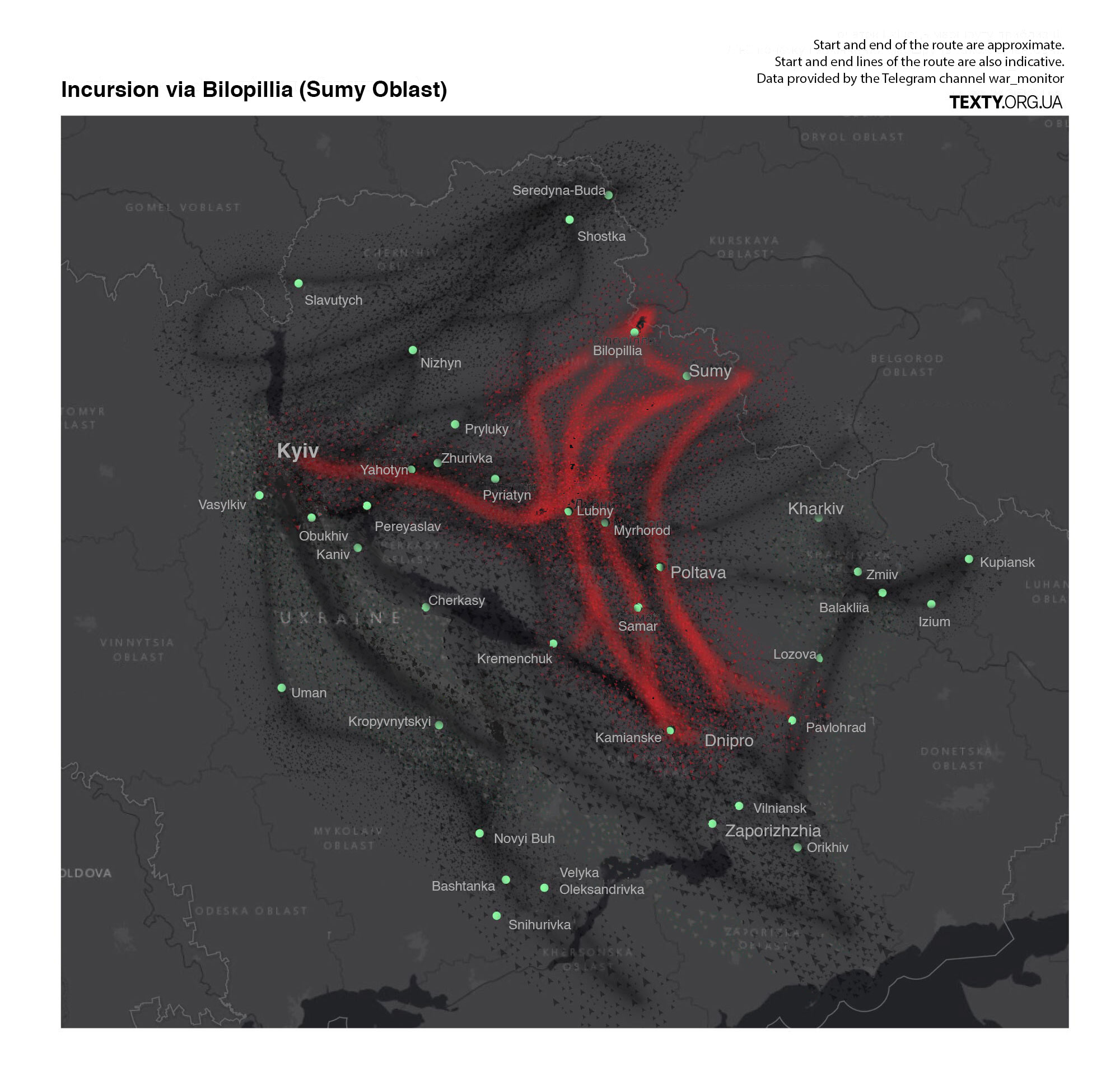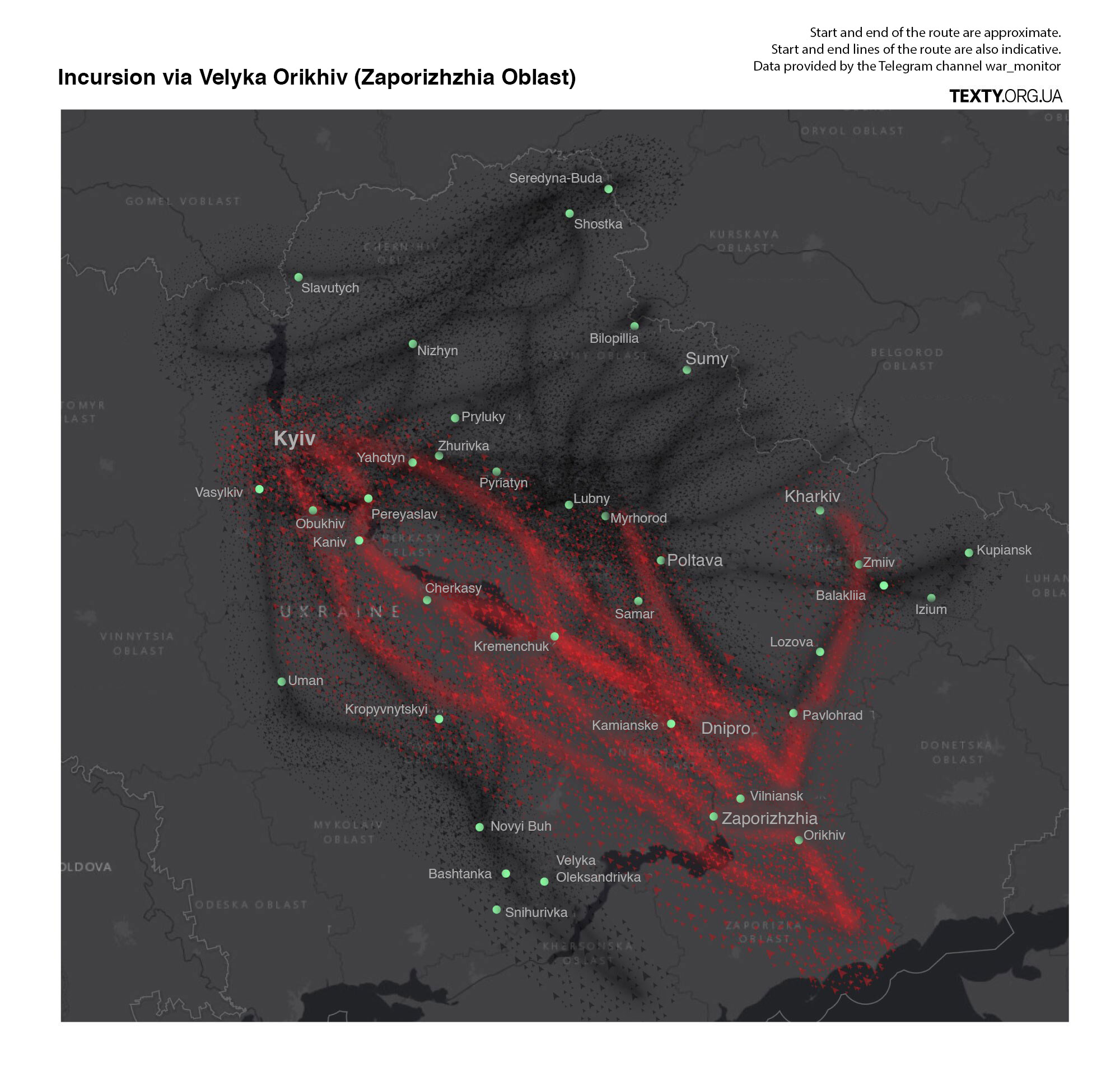Over the recent months, Ukrainian air defenses started shooting down significantly fewer Russian long-range drones than before, with more Shahed one-way attack drones penetrating defenses and hitting residential neighborhoods and civilian infrastructure.
The Ukrainian media outlet Texty examined how Russia has changed its tactics with Iranian-designed Shahed explosive drones in daily attacks against Ukrainian cities.
Attack patterns
Texty reports that Shahed drones are typically launched from mobile launchers disguised as civilian trucks, with each vehicle capable of firing up to five drones simultaneously. The Russians typically launch hundreds of these drones at once from multiple directions, with the unmanned aircraft following different routes, often navigating by cellular network towers.
According to the analysis, Russian drone formations often include a lead Shahed UAV that the others follow in coordinated flight. Maps featured in the original report illustrate multiple approach routes used in recent attacks, with drone swarms entering through Sumy, Kharkiv, Zaporizhzhia, and Kherson oblasts en route to Kyiv.






Defense challenges
Until recently, Ukrainian mobile defense groups were relatively effective at intercepting incoming Shahed drones.
The Ukrainian analysis highlights that even German-supplied Gepard anti-aircraft systems, equipped with twin 35 mm cannons, as well as the advanced Skynex radar-guided systems, have seen reduced effectiveness against the evolving Russian drone tactics.
Kyiv to expand production of Shahed-targeting interceptor drones after successful testing
Deception tactics
Over the past three months, Texty reports that Russian forces have started deploying wooden decoy drones known as Parody alongside Shahed UAVs. These rudimentary wooden aircraft carry devices that generate false radar signatures, tricking defense systems into mistaking them for large targets such as Il-76 transport planes.
According to Texty, each smart anti-aircraft shell—equipped with a programmed detonation system—costs around $9,000. In some cases, as many as 30 to 40 of these costly munitions may be fired at a single drone without success, due to the effectiveness of Russia’s radar deception techniques.
Helicopter countermeasures
According to the analysis, helicopters have emerged as the most effective means of destroying Shahed drones amid the changed Russian tactics. Ukrainian helicopter crews track the drones to areas away from buildings before firing, typically requiring only two or three bursts to bring down a Shahed. The crews specifically target the drone’s engine to prevent its warhead from exploding.
Ukrainian helicopters are outfitted with 30-kilogram FLIR (Forward Looking Infrared) observation systems, enabling round-the-clock monitoring of the airspace in any weather conditions. During the day, crews rely on the thermal camera, while infrared capabilities are used at night to detect incoming drones.
However, Texty notes that deploying helicopters near the border or frontline poses a serious risk because of active Russian air defense systems. As a result, these aircraft operate only in areas beyond the reach of enemy surface-to-air missiles.
Texty notes that Ukrainian helicopter crews typically work in pairs—one illuminating targets with FLIR and the other destroying them. Some crews have reportedly shot down 150-160 Shahed drones over the past two months alone.
Ongoing challenges
According to Texty, the air corridors through which Russian Shahed drone swarms advance typically stretch 60 to 70 kilometers wide. These broad zones of approach are too large to be fully covered by the limited number of helicopters currently available to Ukrainian forces. As a result, significant portions of the airspace remain exposed, allowing drones to slip through and reach their targets.
Read also
-
Frontline report: Ukraine’s sci-fi laser weapon Tryzub blinds Russian pilots and melts drones mid-air
-
Russia deploys advanced 12-channel Shahed drones to strike Mykolaiv, leaving 100,000 without heating
-
Shahed drones scatter delayed-action grenades across Ukraine
-
Russia ramps up Shahed drone strikes, raising concerns over future mass missile attacks during cold season in Ukraine




